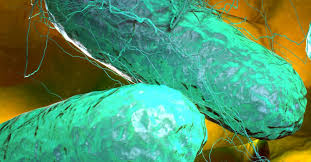Content of the Article
leptospirosisis an infection caused by the bacterium Leptospira. The bacteria that cause this infection are transmitted to humans through animals, particularly rodents.
The disease is transmitted through contact with water contaminated with the urine of an infected animal. It spreads in the form of epidemics as a result of exposure to flood waters. Contact with the soil can also cause the transmission of the disease.
Bacteria enter the body through cuts on the skin or mucous membranes, ie from areas such as eyes, nose and mouth.
There are different types of Leptospira bacteria. It not only makes people sick, but also animals. This water-borne bacterial disease is transmitted from both domestic and wild animals.

Studies, leptospirosisrevealed that flour is common in developing countries. Although little is known about it, the infection does not spread from person to person. Its infectivity is considered weak.
In some cases, the bacterial infection escalates to severe levels, causing the development of Weil's disease. this disease leptospirosisIt is the severe form of flour and can be fatal.
What are the causes of leptospirosis?
Contact with water, vegetation, or wet soil contaminated with the urine of an infected animal is the cause of the spread of bacterial infection. Common carriers of Leptospira bacteria are rodents (mice and rats), pigs, cattle, dogs and horses.
People and occupations affected by the bacteria that cause the infection include:
- Those who drink contaminated water
- Contact of those with unhealed cuts with contaminated water
- Farmers,
- sewer maintenance workers
- veterinarians,
- slaughterhouse workers,
- sailors on the rivers,
- Waste disposal facility employees

What are the symptoms of leptospirosis?
Symptoms of bacterial infection usually appear suddenly. It manifests itself 5 to 14 days after ingestion of Leptospira bacteria. In some cases, while the infection is mild, it can also cause severe symptoms. Symptoms of severe and mild infection vary.
Light leptospirosis In this case, the symptoms are:
- fever and chills,
- Jaundice,
- Cough,
- Redness and irritation of the eyes
- Headache
- Muscle pain, especially in the lower back and calves,
- Rashes
- diarrhea, vomiting
Mild leptospirosis symptoms it usually disappears within seven days without the need for treatment.
mild leptospirosis within a few days after symptoms decrease or disappear severe leptospirosis develops. Symptoms can cause respiratory distress, liver or kidney failure, and even meningitis.
leptospirosis If it affects the heart, kidneys and liver, the following symptoms occur:
- Muscle pain
- Nose bleeding,
- Chest pain,
- Weakness,
- unexplained weight loss
- Anorexia,
- Irregular and rapid heartbeat
- swelling of the hands, feet or ankles,
- Nausea,
- jaundice with yellowing of the whites of the eyes and tongue
- be out of breath

Left untreated, symptoms can lead to kidney failure. leptospirosiscan cause meningitis or encephalitis if it affects the brain or spinal cord. In this case, the following symptoms occur.
- Vomiting,
- neck stiffness,
- aggressive behavior
- High fever,
- Difficulty concentrating
- Numbness
- Seizures
- Problems with physical movements
- Nausea,
- Photophobia ie light sensitivity
- can't speak.
If the infection affects the lungs, symptoms include:
- High fever,
- Difficulty breathing
- spitting blood

How is leptospirosis diagnosed?
Since the symptoms of the infection are similar to those of the flu or other infections, leptospirosis It is difficult to determine in the initial or mild stage. Light leptospirosis heals on its own within a seven-day period. doctor serious leptospirosisIf he suspects it, he will run some tests.
Blood tests are done to detect the presence of antibodies to the bacteria. Other tests include:
- Enzyme-linked immunosorbent assay (ELISA)
- A serological test and diagnosis of leptospirosisMAT (microscopic agglutination test), which is accepted as the gold standard in
- Polymerase chain reaction (PCR)
Apart from these, urinalysis is also done.
How is leptospirosis treated?
leptospirosis The most effective treatment is antibiotic therapy. leptospirosis The drugs used for this are ampicillin, azithromycin, ceftriaxone, doxycycline and penicillin.
If the symptoms cause conditions such as kidney failure, meningitis or encephalitis, the patient will need to be hospitalized for further treatment.
What are the complications of leptospirosis?
If left untreated, this bacterial infection causes the development of life-threatening conditions.
- It can lead to kidney failure, liver failure or heart failure.
- In some extreme cases, death may occur.
- It can cause Weil's disease.

How to prevent leptospirosis?
To prevent the onset of infection, take the following precautions:
- Wash and clean wounds.
- Employees in risky jobs should wear protective clothing such as boots, gloves, goggles, aprons, and masks.
- For clean water.
- Cover cuts and wounds on the skin with a waterproof dressing.
- Do not walk or swim in potentially contaminated water.
- Shower after exposure to contaminated urine, contaminated soil or water.
- Do not touch sick or dead animals.
- Observe hygiene measures when caring for or transporting animals.
- In stables, butchers, slaughterhouses, the floors must be disinfected.










